ADHD is characterized by impulsivity, the lack of a pause button. This inability to stop and pause before reacting can create massive problems. Learn the 5 steps of self-regulation to combat ADHD impulsivity.
What is ADHD Impulsivity?
ADHD impulsivity is reacting quickly without pausing to consider the best response. This is due to people with ADHD having reduced self-regulation.
You blurt out your first thought. Say something and offend someone.

And then there you are again, playing catchup. Trying to clean up a mess you made without thinking.
Examples of ADHD Impulsivity in Adults
Adult ADHD impulsivity can affect many areas of life, here are a few examples:
- Blurting out a rude comment and offending your friend.
- Yelling out answers when it isn’t your turn when playing Trivial Pursuit
- Impatiently answering a question before the person has finished speaking
- Making purchases because ‘you just have to have it!’ even if you cannot afford it
- Watching ‘just one more’ Netflix episode... until it is 1am
- Inability to stick to your rule of ‘just 2 drinks’
- Getting overly involved early in a relationship and having your heart broken.
- Habits like nail biting, skin picking or scalp picking

Now, sometimes impulsivity can lead to amazing opportunities! Taking a chance isn’t always a bad thing!
But looking at the list above, you can see that impulsivity can affect your friendships, your finances and your health in very negative ways.
If your impulsive choices are leading you astray, read on about the steps of self regulation.
How to Control Impulsive Behaviour With Adult ADHD
The medical diagnosis of ADHD is based on the presence of symptoms of inattention, impulsivity and hyperactivity. But this is only looking at the outward effects of ADHD.
The underlying cause of all these symptoms is reduced self-regulation. It is like our on/off switch is not working quite right. This is why it can be hard to stop yourself from making that unfortunate comment, to stop playing that video game, but also why it is hard to get yourself going on a project.

Skills before pills may be a silly expression, but it does highlight the importance of building skills. ADHD medication can reduce impulsivity, but you still need skills to manage ADHD impulsivity.
Read on to learn the steps of self-regulation, and how to improve your impulse control.
Adult ADHD Impulse Control: The Mind’s Brake
The first step in self regulation is building in a pause, a brake in your mind.

Understanding that ADHD leads you to act on impulse is important. Self regulation will be harder in certain situations. It can be harder if there are distractions or it is an emotional or stressful situation.
Set yourself up for success by practicing techniques to give yourself a pause.
Breathing exercises like the physiological sigh are really good for this, and when you practice in low stress situations you will be able to draw on your skills when you need them.

Avoiding certain situations if you can, or set yourself up for success. Always making impulse purchases? Only carry a small amount of cash, or only carry a debit card tied to a bank account with a small balance. You can always buy the item later if you still really want it.

Always taking on too many projects? Practice a script like ‘That sounds interesting, let me get back to you’ by yourself in front of the mirror. Practice it enough and it will be in your brain when you need it.
Or even right after you agree you can stop and say ‘Oh my goodness! You know, on second thought, I really should look at my schedule before I fully commit.’
Adult ADHD Impulse Control: The Mind’s Eye
If you can put on the brake, then you want to use mental imagery or ‘the mind’s eye’. The mind’s eye helps you understand where you are, an important step in deciding what to do.
The mind’s eye lets you recall events of the past. What experiences have you had that is similar to this one? What relevant experiences can you recall?
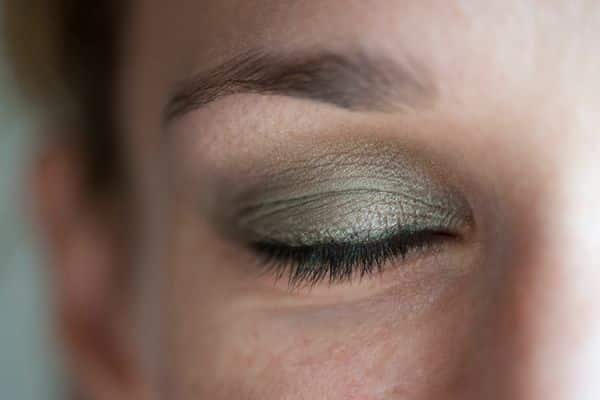
We are talking about hindsight, visually imagining your history.
Using your mental imagery of hindsight leads you to having foresight. Looking back and reflecting on history helps you anticipate the future.

And it is no surprise that this is a problem for people with ADHD as visual imagery is tied to our working memories (which is weaker in ADHD).
To improve visual imagery you can do visual meditations where you recall in detail an event like a hike. There are also visual exercises like going through every letter of the alphabet and naming (which requires visualizing) a food or animal that starts with each letter.
Adult ADHD Impulse Control: The Mind’s Voice
The mind’s voice is your internal dialogue. We all talk to ourselves but people with ADHD have more difficulty with this.
Talking to yourself is how you control yourself. You tell yourself what to do, or what not to do.
You hold yourself back from doing something you should not. You cheerlead yourself to do something necessary but which you would rather not do.
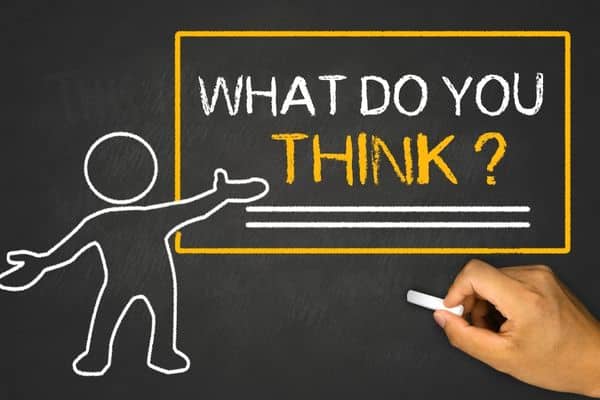
First you stop with your mind’s brake. Then you use your mind’s eye to remember and visualise the rules of the situation you are in.
Then your mind’s voice tells you the steps you need to follow to stay within the rules.

The first step to improve your mind’s voice is to make it less critical. People with ADHD are usually very critical of themselves, and others.
To improve the way you talk to yourself you make a list of your strengths (ask your friends to help!) and learn about self-compassion. Realize that everyone makes mistakes and be kinder to yourself.
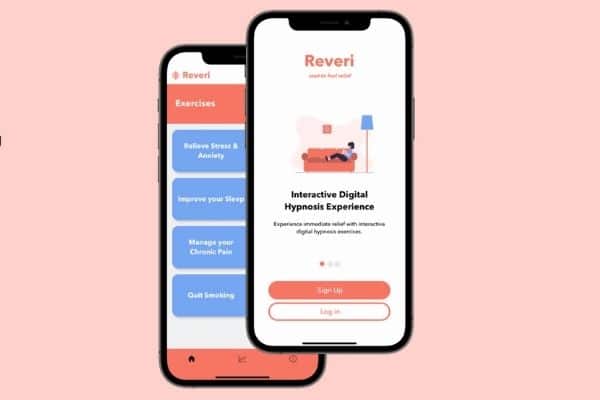
Another technique is to externalize your thoughts by putting them down on paper. You can make a pros/cons list, or just journal your thoughts on the issue. Since ADHD also involves a smaller working memory, this can help you organize all those thoughts.
Adult ADHD Impulse Control: The Mind’s Heart
The next step is using your minds’ heart. This means having the ability to manage your emotions so that your reactions are more socially acceptable.
People with ADHD are known to have very volatile emotions, termed deficient emotional self-regulation. It is these strong emotions which can lead to impulsive reactions.

To manage your emotions, you first have to know what emotions you are feeling! This may sound absurd but a lot of people with ADHD do not fully feel their emotions.
Therapy can help with working through emotions but there are simple techniques you can do at home.
Using a Feeling Wheel regularly can help you identify your emotions. I put mine on my phone as my screen saver and often feel ridiculous when I use it. I mean I should be able to figure this out right? Ummm… it turns out it’s really helpful.
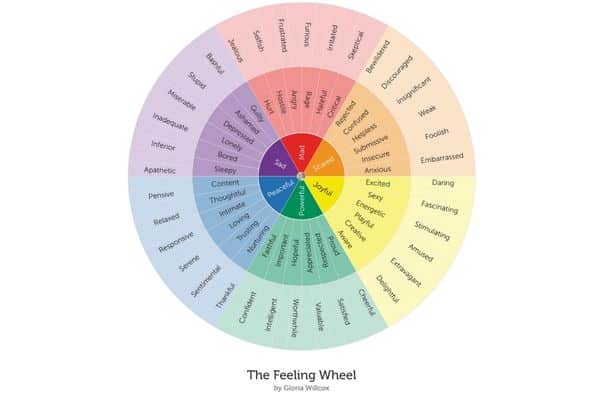
Loving kindness meditations are really good at strengthening the brains pathways surrounding emotions. There is also scientific evidence for a new meditation practice where you recall people expressing gratitude towards you.

Our emotions are tied into physical sensations in our body, so feeling our body better (and guess what, we often are not great at that either!) also helps with this.
Body scans like yoga nidra help strengthen the connections in the brain that sense our body.
Adult ADHD Impulse Control: The Mind’s Playground
The last ability is to use your mind’s playground. This is the ability to plan and problem solve.
Can you think of multiple ways to overcome this problem you are facing?
Dr. Barkley (ADHD expert) says that the ability to simulate multiple possible future options is the highest executive function in humans.
Now when I read this I think ‘Are you crazy, I can totally do that!’. And I can… with certain things.
Adults with ADHD may have excellent problem solving skills in one area in life, but not in another. And problem solving is reduced if we are upset or tired. Recognizing this is important.
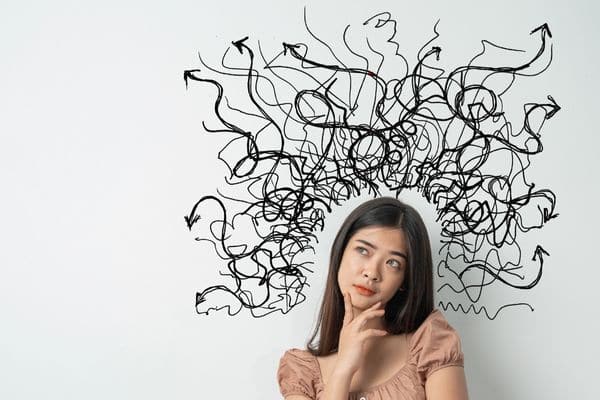
To strengthen problem solving it helps to externalise the problem by writing it down. Try to figure out what the main issue is rather than focusing on small details.
Get some advice! I cannot tell you the number of times I was stumped and a friend gave me a simple solution that had eluded me. (I seem to be able to do this for others as well!)
Exercise also really helps our brain problem solve, so try going for a quick jog or doing jumping jacks. I’ve found this to be pretty amazing at times.
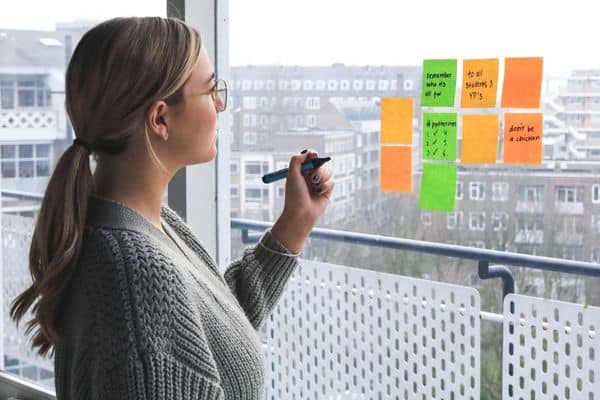
And once you have a solution? If it is overwhelming, break it down into smaller steps. There are specific steps to keep the ADHD brain on track.
Summary: Adult ADHD Impulse Control
So now you understand that many of the difficulties due to ADHD involves impulsivity.
The 5 steps of self regulation that are needed to be thoughtful and to resist impulsivity are:
- Stop – The Mind’s Brake
- Use visual imagery – The Mind’s Eye
- Self talk – The Mind’s Voice
- Feel your emotions – The Mind’s Heart
- Problem solve – The Mind’s Playground
Best Wasy to Improve ADHD Impulse Control
These self regulation steps are weaker in people with ADHD but they can be strengthened through these techniques:
- Breathing exercises
- Meditation to build mindfulness
- Coming up with ‘scripts’ – pre-made answers for common problem situations
- Recognize and avoid or prepare for high stress situations
- Visual meditations
- Visual exercises
- NSDR techniques like self-hypnosis to help with visualization
- Feeling wheel to identify emotions
- Body Scans like Yoga Nidra
- Writing down pros and cons
- Gratitude meditation (focusing on receiving gratitude)
- Exercise just before trying to problem solve
References
- Dr. Russell Barkley Lecture: 30 Essential Ideas you should know about ADHD, 3A The Five Executive Functions
- ADHD 2.0
- The Feeling Wheel -A Tool for Expanding Awareness of Emotions and Increasing Spontaneity and Intimacy
- The Huberman Lab Podcast: The Science of Gratitude & How to Build a Gratitude Practice
- The Huberman Lab Podcast: Dr. David Spiegel: Using Hypnosis to Enhance Mental & Physical Health & Performance
